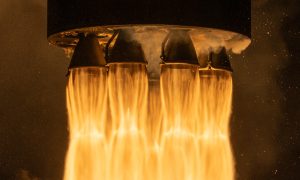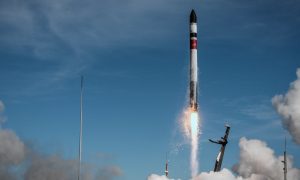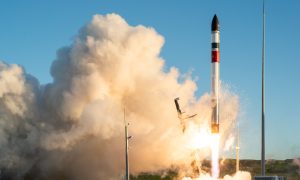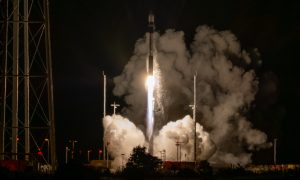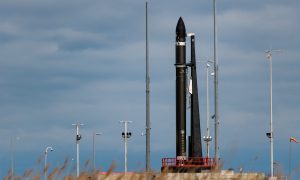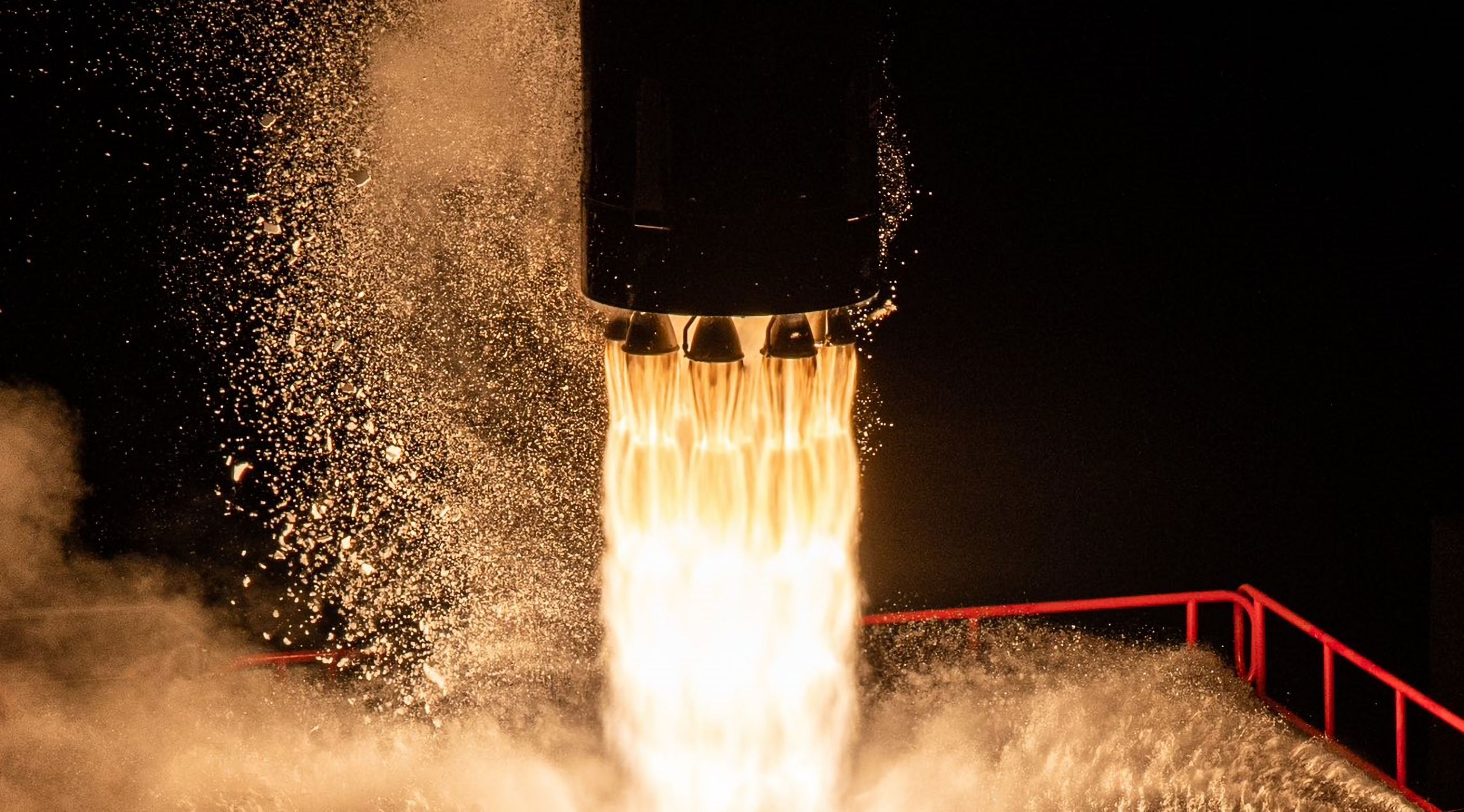

News
Rocket Lab aces first Electron rocket launch from US soil
After many delays, Rocket Lab has successfully launched an Electron rocket from US soil for the first time.
The company’s small Electron rocket lifted off at 6 pm EST (23:00 UTC), January 24th, from a pad built at NASA’s Wallops Flight Facility. About nine minutes later, the Electron upper stage reached low Earth orbit (LEO) and shut down its Rutherford Vacuum engine. 90 minutes after liftoff, the rocket finished deploying three new Hawkeye 360 Earth observation satellites, marking the successful completion of Rocket Lab’s first American launch.
Rocket Lab’s workhorse rocket is relatively unique. Electron is the only rocket in the world to successfully reach orbit with structures built almost entirely out of carbon fiber composites. It’s also the only orbital-class rocket in the world that uses engines with battery-powered pumps. Electron measures 18 meters (59 ft) tall, 1.2 meters (4 ft) wide, and weighs about 13 tons (~28,500 lbs) at liftoff, making it one of the smallest orbital rockets ever. It sells for about $7.5 million and can launch up to 200 kilograms (440 lb) to a sun-synchronous orbit or 300 kilograms (660 lb) to LEO.
The update that's rolling out to the fleet makes full use of the front and rear steering travel to minimize turning circle. In this case a reduction of 1.6 feet just over the air— Wes (@wmorrill3) April 16, 2024
Electron is by far the cheapest widely-available option for a dedicated rocket launch. Although a fully-utilized Electron costs more than $25,000 per kilogram, Rocket Lab has found a decent number of customers that find the benefits worth the cost premium. SpaceX currently offers rideshare launch services for just $5,500 per kilogram. But a dedicated Electron launch buys customers white-glove service and control over the exact timing and target orbit, among other perks.
Many companies are developing orbital transfer vehicles (space tugs) to combine the affordable cost of rideshare launches with customized orbits and deployment timing, but rideshare payloads will always have to grapple with inflexible launch timing. SpaceX will not delay a launch carrying 50-100+ other payloads because one satellite is running behind schedule.
Rocket Lab’s history shows that plenty of companies are willing to pay far more for the convenience of a direct launch. Electron’s first launch from US soil was the rocket’s 30th successful launch and 33rd launch since its May 2017 debut. In 2022, Rocket Lab managed to launch eight times in eight months and nine times overall. Had bad winter weather not conspired to delay its first US launch, the company would have broken into the double digits for the first time and likely kept its monthly launch streak alive.
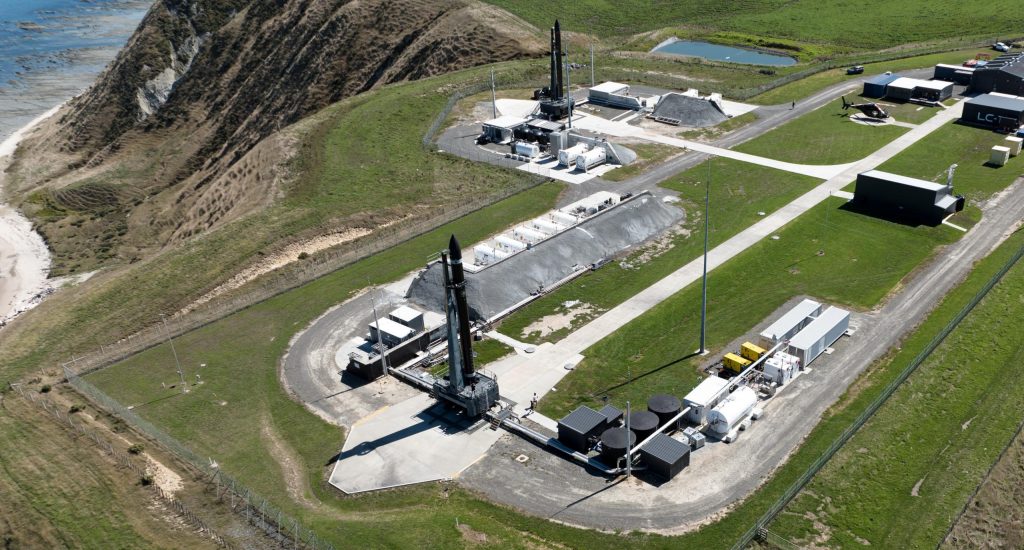
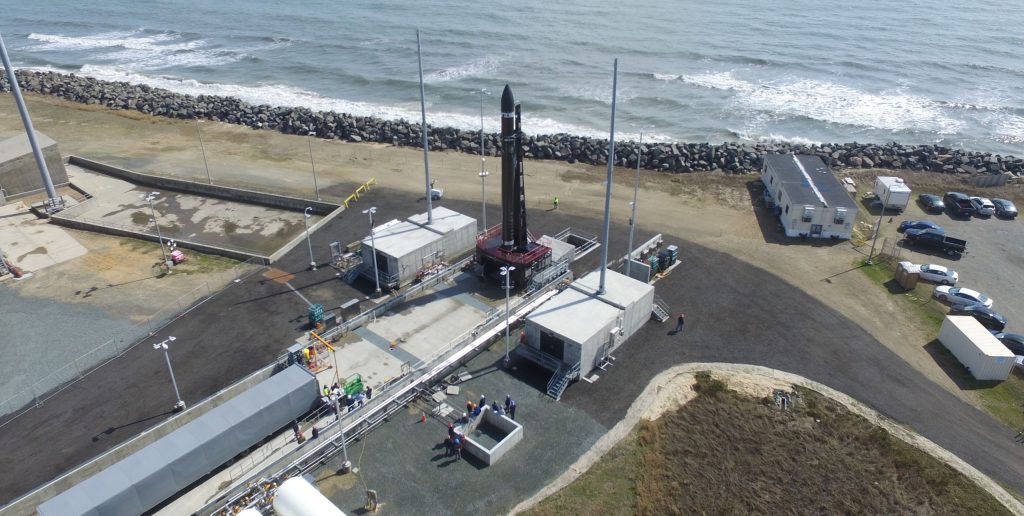
Sisyphean delays
Rocket Lab’s first American launch is no stranger to delays. The company announced plans to build a US launch site in October 2018. At the time, Rocket Lab hoped to launch its first Electron out of Virginia’s NASA Wallops Flight Facility as early as Q3 2019. For a number of reasons, many of which were outside of Rocket Lab’s control, that didn’t happen.
Rocket Lab began constructing its Launch Complex 2 (LC-2) pad in Virginia in February 2019 and finished construction by the start of 2020. At that point, the then-private company stated that LC-2 was on track to host its first Electron rocket launch as early as Q2 2020. In Q2, Rocket Lab even shipped an Electron to Virginia and completed a range of pad shakedown tests, including a wet dress rehearsal (WDR) and static fire test.
Rocket Lab isn’t entirely free of fault. However, nearly all of the blame for that delay appears to lie with NASA, who required that Rocket Lab use the agency’s own software for a new kind of “flight termination system.” Rocket Lab had already successfully developed and repeatedly flown its own autonomous flight termination system for use at its New Zealand launch site. AFTS replaces a human-in-the-loop with software that monitors a rocket and decides if it needs to protect populated areas by triggering explosive charges that will destroy the vehicle.
NASA’s software was plagued by years of delays, causing the payload assigned to Electron’s US launch debut to change repeatedly. In 2019, it was supposed to be a Space Test Program (STP) mission for the US Air Force. From 2020 to 2021, it was supposed to be NASA’s CAPSTONE mission to the Moon. Both missions were ultimately launched at Rocket Lab’s primary launch site in New Zealand.
Only in January 2023, almost three years after Rocket Lab was first ready to go, did Electron finally lift off from US soil with a trio of Hawkeye 360 radio surveillance satellites in tow. The mission was the first of Electron launches purchased by Hawkeye 360 to launch 15 satellites. Rocket Lab intends to launch again from LC-2 in the near future and has already shipped a second Electron rocket to Virginia.
News
Tesla cleared in Canada EV rebate investigation
Tesla has been cleared in an investigation into the company’s staggering number of EV rebate claims in Canada in January.

Canadian officials have cleared Tesla following an investigation into a large number of claims submitted to the country’s electric vehicle (EV) rebates earlier this year.
Transport Canada has ruled that there was no evidence of fraud after Tesla submitted 8,653 EV rebate claims for the country’s Incentives for Zero-Emission Vehicles (iZEV) program, as detailed in a report on Friday from The Globe and Mail. Despite the huge number of claims, Canadian authorities have found that the figure represented vehicles that had been delivered prior to the submission deadline for the program.
According to Transport Minister Chrystia Freeland, the claims “were determined to legitimately represent cars sold before January 12,” which was the final day for OEMs to submit these claims before the government suspended the program.
Upon initial reporting of the Tesla claims submitted in January, it was estimated that they were valued at around $43 million. In March, Freeland and Transport Canada opened the investigation into Tesla, noting that they would be freezing the rebate payments until the claims were found to be valid.
READ MORE ON ELECTRIC VEHICLES: EVs getting cleaner more quickly than expected in Europe: study
Huw Williams, Canadian Automobile Dealers Association Public Affairs Director, accepted the results of the investigation, while also questioning how Tesla knew to submit the claims that weekend, just before the program ran out.
“I think there’s a larger question as to how Tesla knew to run those through on that weekend,” Williams said. “It doesn’t appear to me that we have an investigation into any communication between Transport Canada and Tesla, between officials who may have shared information inappropriately.”
Tesla sales have been down in Canada for the first half of this year, amidst turmoil between the country and the Trump administration’s tariffs. Although Elon Musk has since stepped back from his role with the administration, a number of companies and officials in Canada were calling for a boycott of Tesla’s vehicles earlier this year, due in part to his association with Trump.
News
Tesla Semis to get 18 new Megachargers at this PepsiCo plant
PepsiCo is set to add more Tesla Semi Megachargers, this time at a facility in North Carolina.

Tesla partner PepsiCo is set to build new Semi charging stations at one of its manufacturing sites, as revealed in new permitting plans shared this week.
On Friday, Tesla charging station scout MarcoRP shared plans on X for 18 Semi Megacharging stalls at PepsiCo’s facility in Charlotte, North Carolina, coming as the latest update plans for the company’s increasingly electrified fleet. The stalls are set to be built side by side, along with three Tesla Megapack grid-scale battery systems.
The plans also note the faster charging speeds for the chargers, which can charge the Class 8 Semi at speeds of up to 1MW. Tesla says that the speed can charge the Semi back to roughly 70 percent in around 30 minutes.
You can see the site plans for the PepsiCo North Carolina Megacharger below.

Credit: PepsiCo (via MarcoRPi1 on X)

Credit: PepsiCo (via MarcoRPi1 on X)
READ MORE ON THE TESLA SEMI: Tesla to build Semi Megacharger station in Southern California
PepsiCo’s Tesla Semi fleet, other Megachargers, and initial tests and deliveries
PepsiCo was the first external customer to take delivery of Tesla’s Semis back in 2023, starting with just an initial order of 15. Since then, the company has continued to expand the fleet, recently taking delivery of an additional 50 units in California. The PepsiCo fleet was up to around 86 units as of last year, according to statements from Semi Senior Manager Dan Priestley.
Additionally, the company has similar Megachargers at its facilities in Modesto, Sacramento, and Fresno, California, and Tesla also submitted plans for approval to build 12 new Megacharging stalls in Los Angeles County.
Over the past couple of years, Tesla has also been delivering the electric Class 8 units to a number of other companies for pilot programs, and Priestley shared some results from PepsiCo’s initial Semi tests last year. Notably, the executive spoke with a handful of PepsiCo workers who said they really liked the Semi and wouldn’t plan on going back to diesel trucks.
The company is also nearing completion of a higher-volume Semi plant at its Gigafactory in Nevada, which is expected to eventually have an annual production capacity of 50,000 Semi units.
Tesla executive teases plan to further electrify supply chain
News
Tesla sales soar in Norway with new Model Y leading the charge
Tesla recorded a 54% year-over-year jump in new vehicle registrations in June.

Tesla is seeing strong momentum in Norway, with sales of the new Model Y helping the company maintain dominance in one of the world’s most electric vehicle-friendly markets.
Model Y upgrades and consumer preferences
According to the Norwegian Road Federation (OFV), Tesla recorded a 54% year-over-year jump in new vehicle registrations in June. The Model Y led the charge, posting a 115% increase compared to the same period last year. Tesla Norway’s growth was even more notable in May, with sales surging a whopping 213%, as noted in a CNBC report.
Christina Bu, secretary general of the Norwegian EV Association (NEVA), stated that Tesla’s strong market performance was partly due to the updated Model Y, which is really just a good car, period.
“I think it just has to do with the fact that they deliver a car which has quite a lot of value for money and is what Norwegians need. What Norwegians need, a large luggage space, all wheel drive, and a tow hitch, high ground clearance as well. In addition, quite good digital solutions which people have gotten used to, and also a charging network,” she said.
Tesla in Europe
Tesla’s success in Norway is supported by long-standing government incentives for EV adoption, including exemptions from VAT, road toll discounts, and access to bus lanes. Public and home charging infrastructure is also widely available, making the EV ownership experience in the country very convenient.
Tesla’s performance in Europe is still a mixed bag, with markets like Germany and France still seeing declines in recent months. In areas such as Norway, Spain, and Portugal, however, Tesla’s new car registrations are rising. Spain’s sales rose 61% and Portugal’s sales rose 7% last month. This suggests that regional demand may be stabilizing or rebounding in pockets of Europe.
-

 Elon Musk2 weeks ago
Elon Musk2 weeks agoTesla investors will be shocked by Jim Cramer’s latest assessment
-

 Elon Musk2 days ago
Elon Musk2 days agoxAI launches Grok 4 with new $300/month SuperGrok Heavy subscription
-

 Elon Musk4 days ago
Elon Musk4 days agoElon Musk confirms Grok 4 launch on July 9 with livestream event
-

 News1 week ago
News1 week agoTesla Model 3 ranks as the safest new car in Europe for 2025, per Euro NCAP tests
-

 Elon Musk2 weeks ago
Elon Musk2 weeks agoA Tesla just delivered itself to a customer autonomously, Elon Musk confirms
-

 Elon Musk1 week ago
Elon Musk1 week agoxAI’s Memphis data center receives air permit despite community criticism
-

 News2 weeks ago
News2 weeks agoXiaomi CEO congratulates Tesla on first FSD delivery: “We have to continue learning!”
-

 News2 weeks ago
News2 weeks agoTesla sees explosive sales growth in UK, Spain, and Netherlands in June


